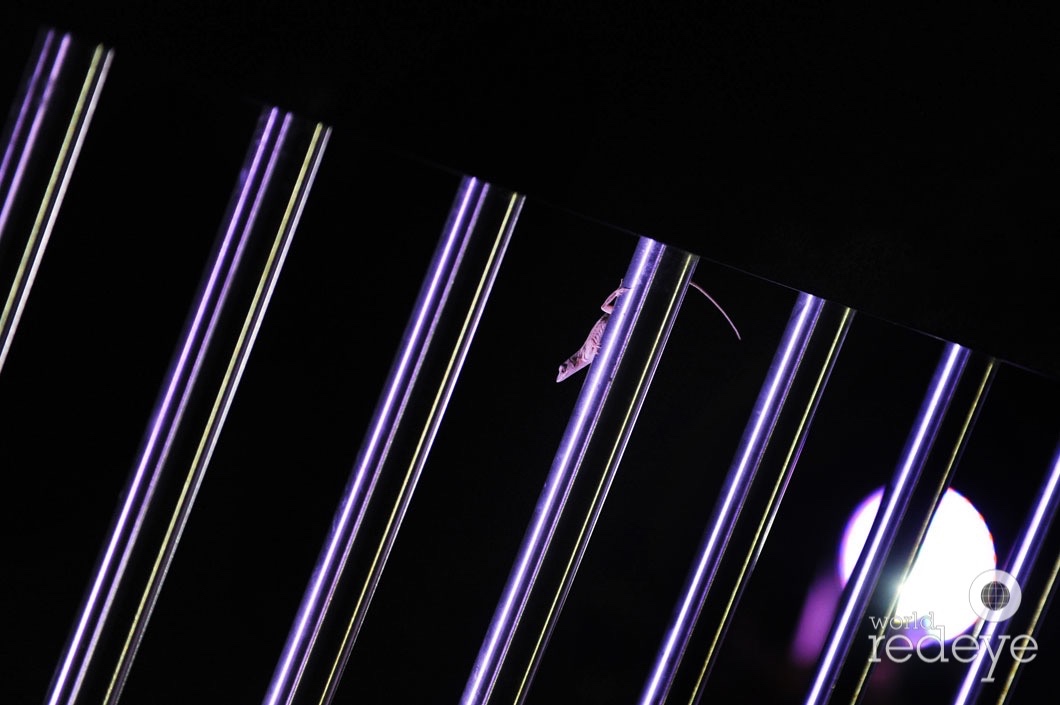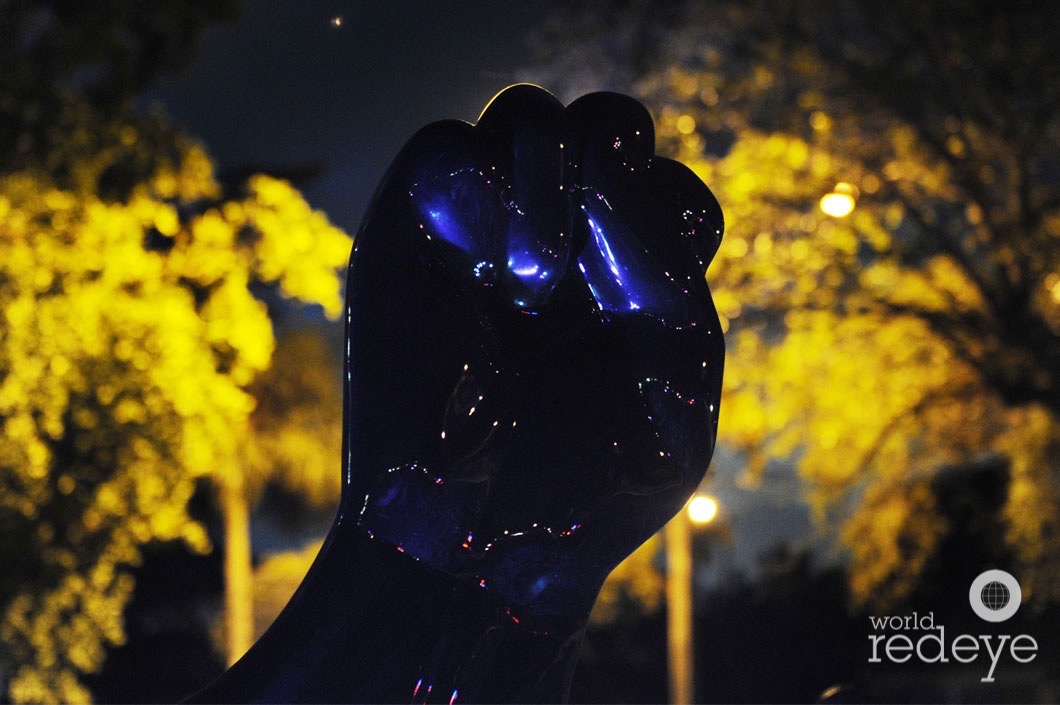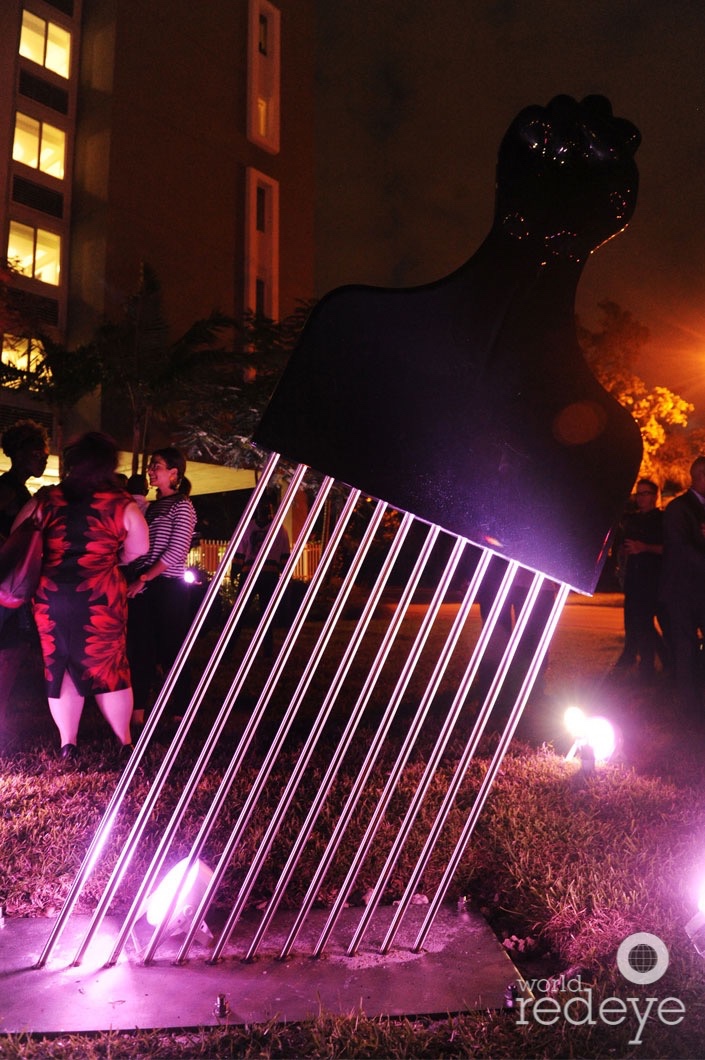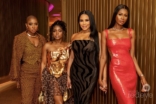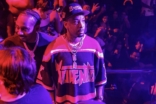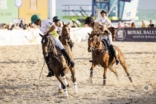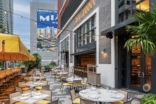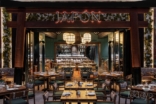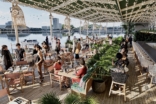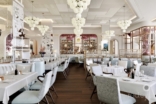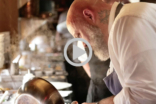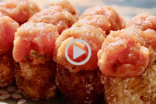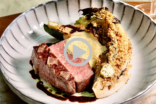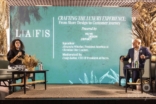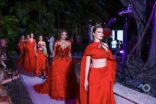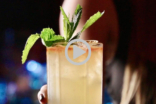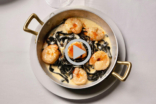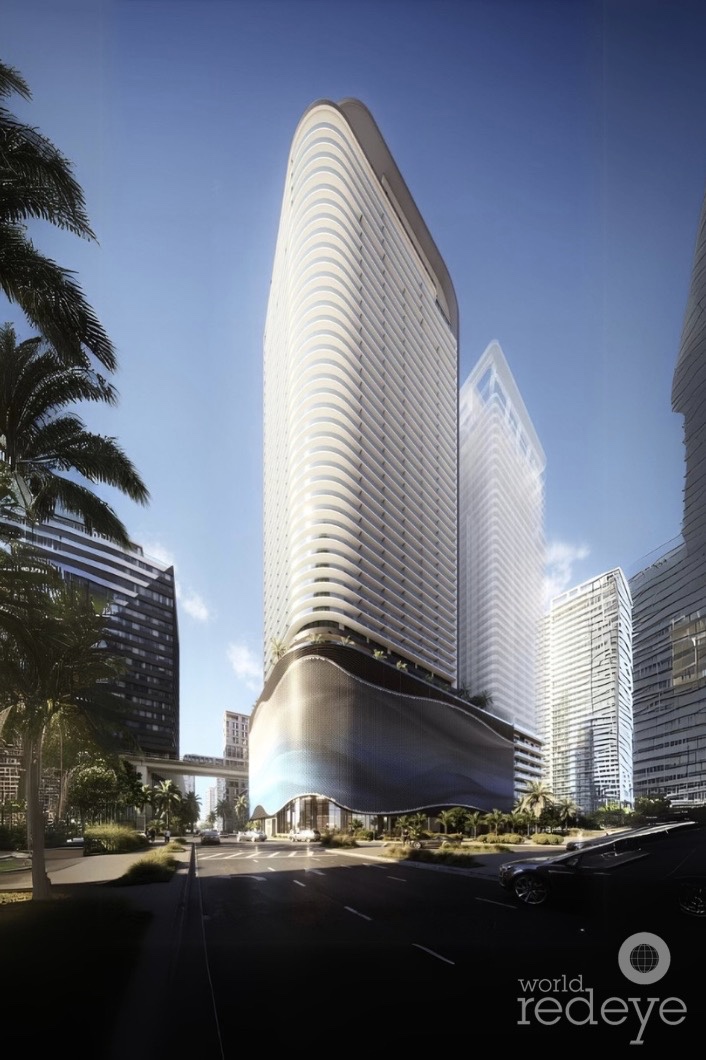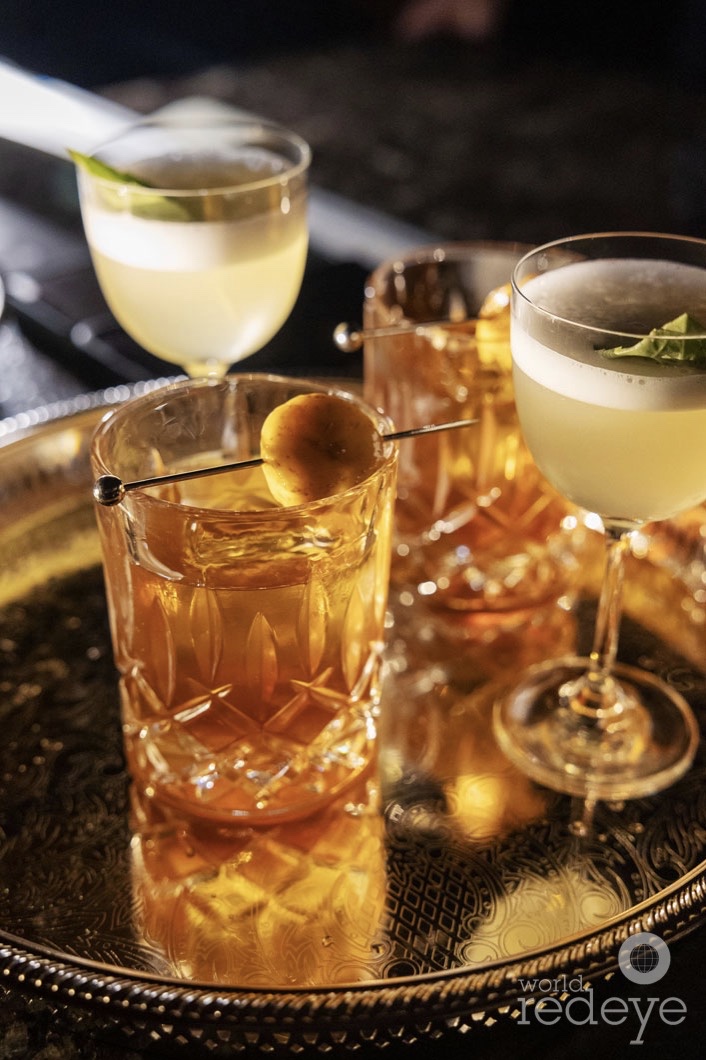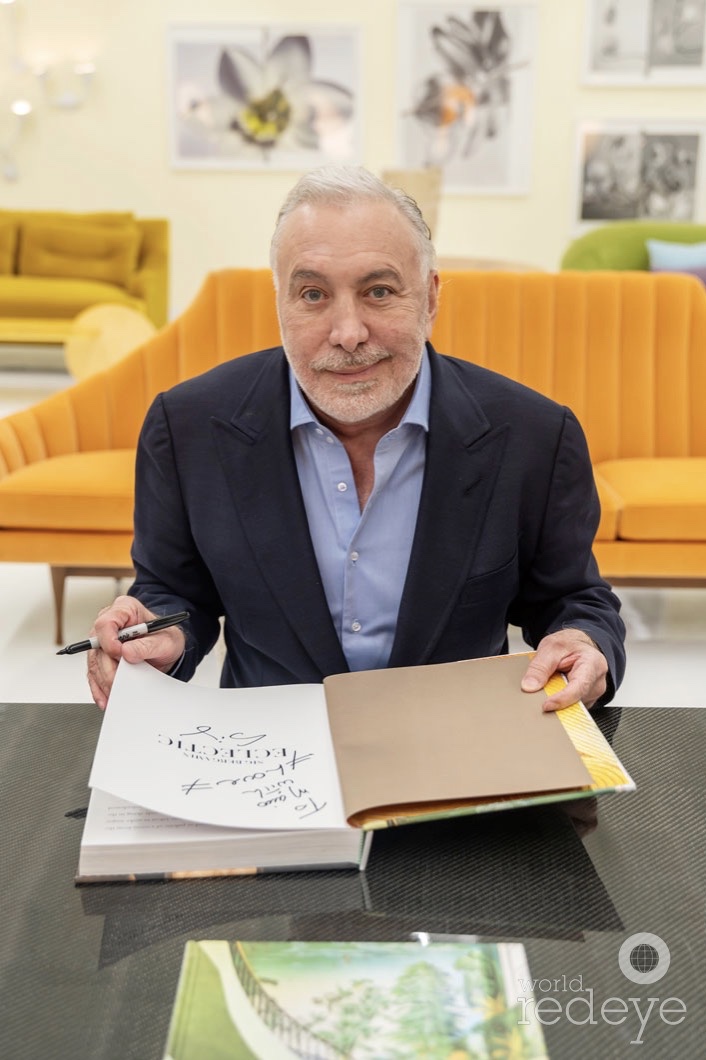Q&A: “All Power to All People” Unveiling Reception with Hank Willis Thomas at THRIVE Innovation District

Miami, FL – October 17, 2017 -Internationally acclaimed artist, Hank Willis Thomas, unveiled his “All Power to All People” public art sculpture in partnership with the Opa-locka Community Development Corporation (OLCDC), on the campus of the emerging THRIVE Innovation District in Opa Locka. Known for his outspoken and transformative works, Hank uses his platform to challenge norms using symbols to highlight ideas of community, strength, perseverance, and resistance to oppression. The installation of this over 800 pound, 8-foot-tall afro pick, associated with counterculture and civil rights, comes at a time of social, economic, and racial divide across the nation.
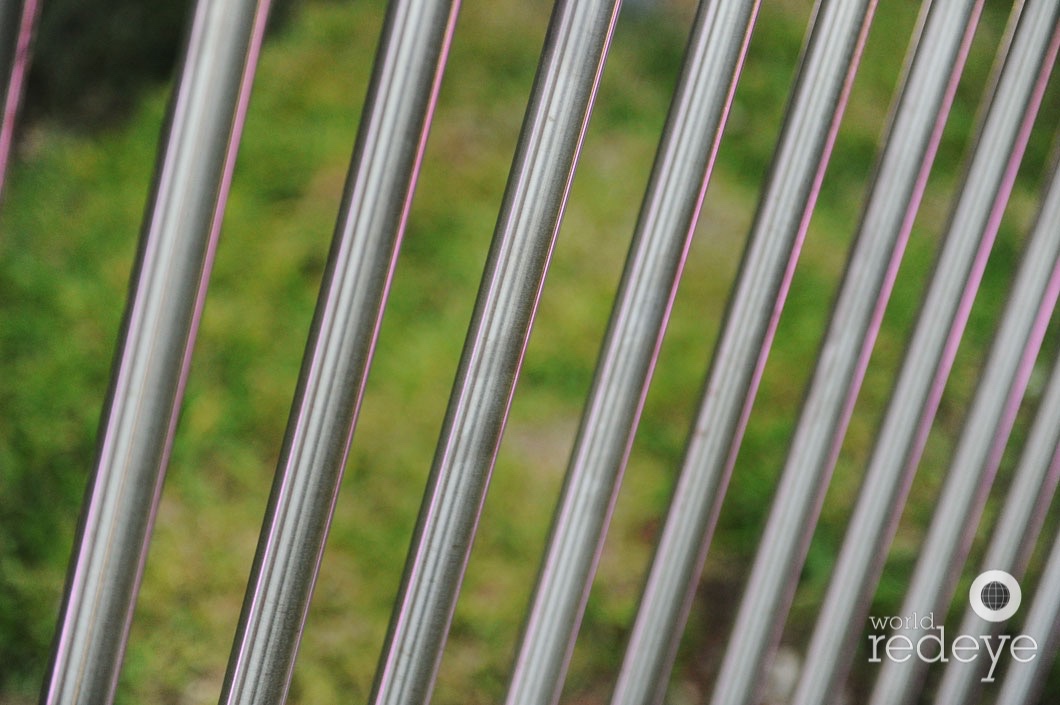
WRE: Tell us about your recent public art sculpture “All Power to All People”?
HWT: At over 800 pounds, the 8-foot-tall afro pick is cast in aluminum and finished with a high gloss black coating. It boasts stainless steel teeth topped with a clenched fist often associated with strength, unity, and black power. The installation of the work, which uses imagery associated with counterculture and civil rights, comes at a time of social, economic, and racial divide across America.
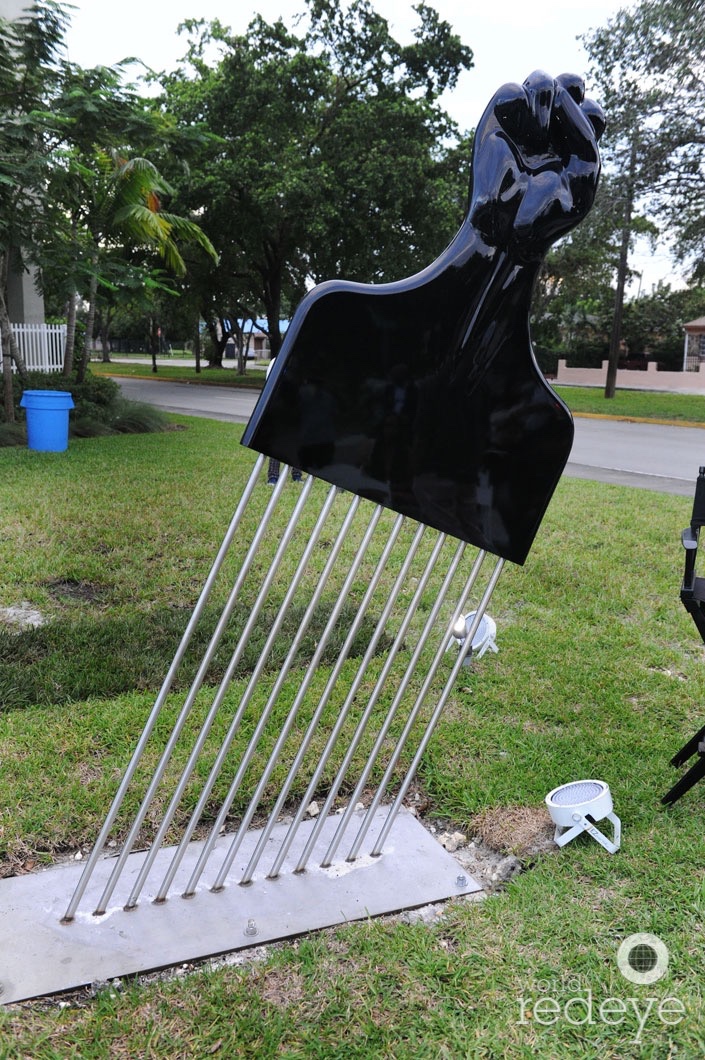
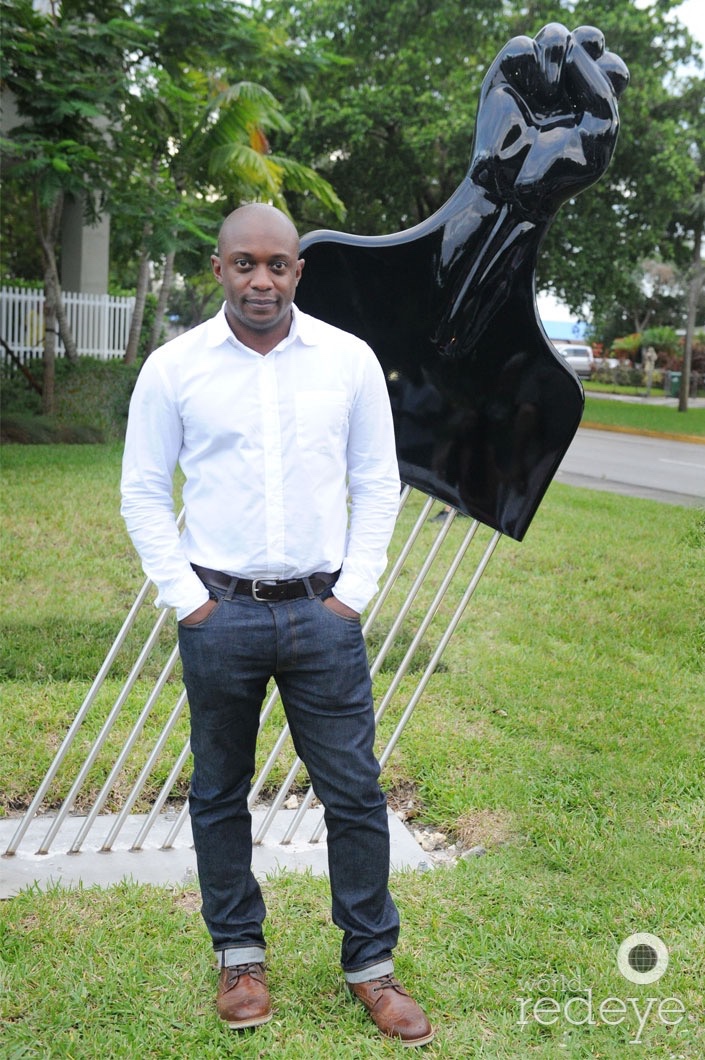
Hank Willis Thomas
I was inspired by the iconography of the black power movement, and that hair was used a tool for protest.
Hank Willis Thomas
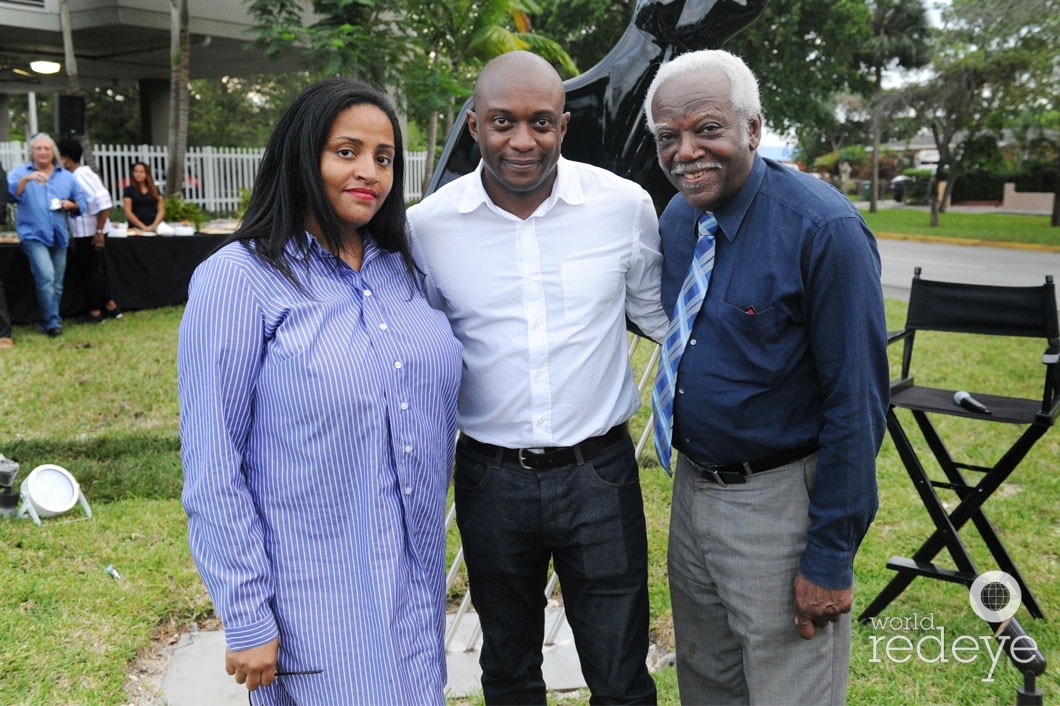
Melissa Hunter Davis, Hank Willis Thomas, & Marshall Davis
WRE: Do you have a particular piece that is the most important or memorable to you? If so, why?
HWT: I do. But I’m more interested in you telling me which one is most memorable for you.
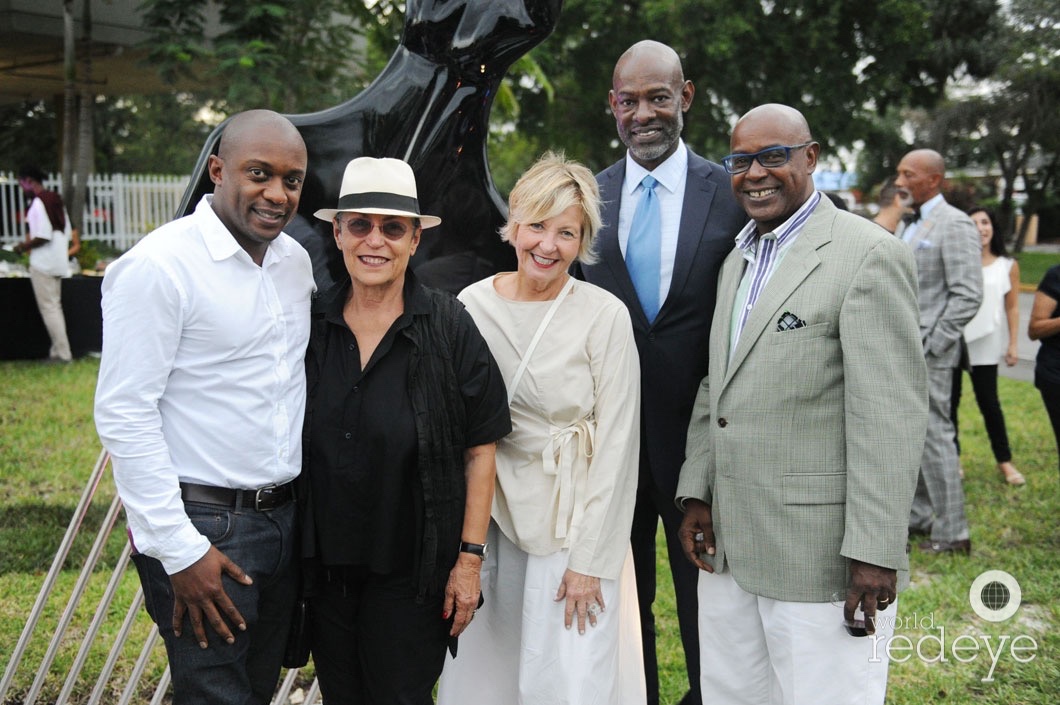
Hank Willis Thomas, Mera Rubell, Cathy Leff, Willie Logan, & Ludlow Bailey
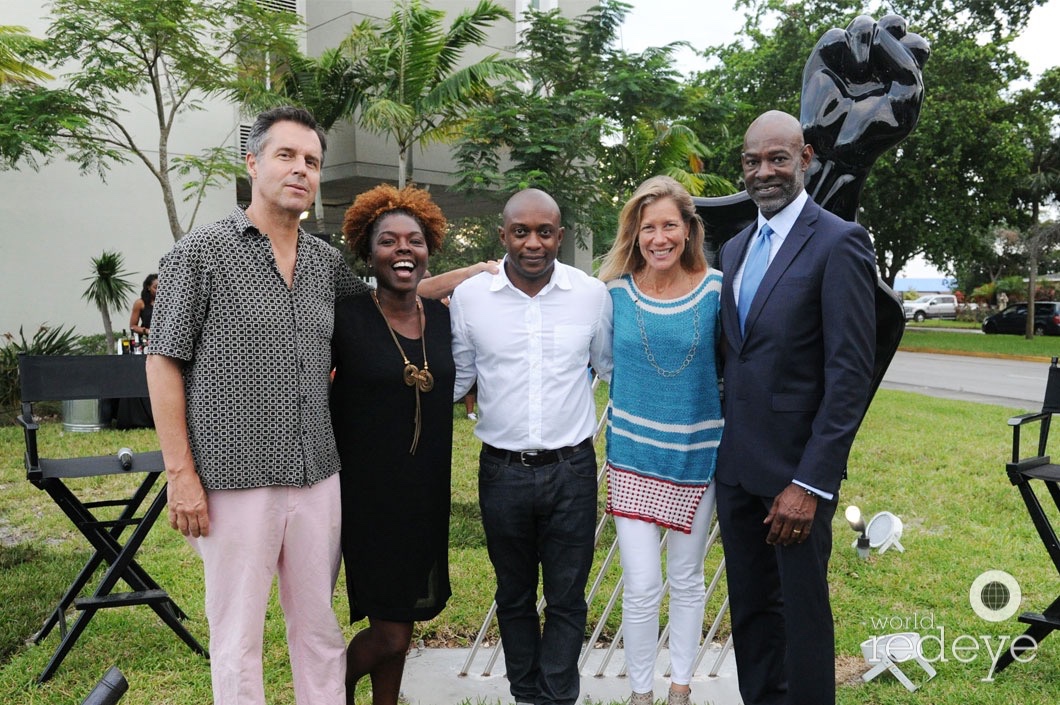
Dan Mikesell, Bahia Ramos, Hank Willis Thomas, Kathryn Mikesell, & Willie Logan
WRE: How did your partnership with the Opa-locka Community Development Corporation come to fruition?
HWT: I met Willie Logan at a lecture a few years ago. Over the course of the following months we met and he introduced me to Opa-locka and its rich history. He asked me to propose a public sculpture. “All Power to All People” (Afro Fist) is what I proposed.
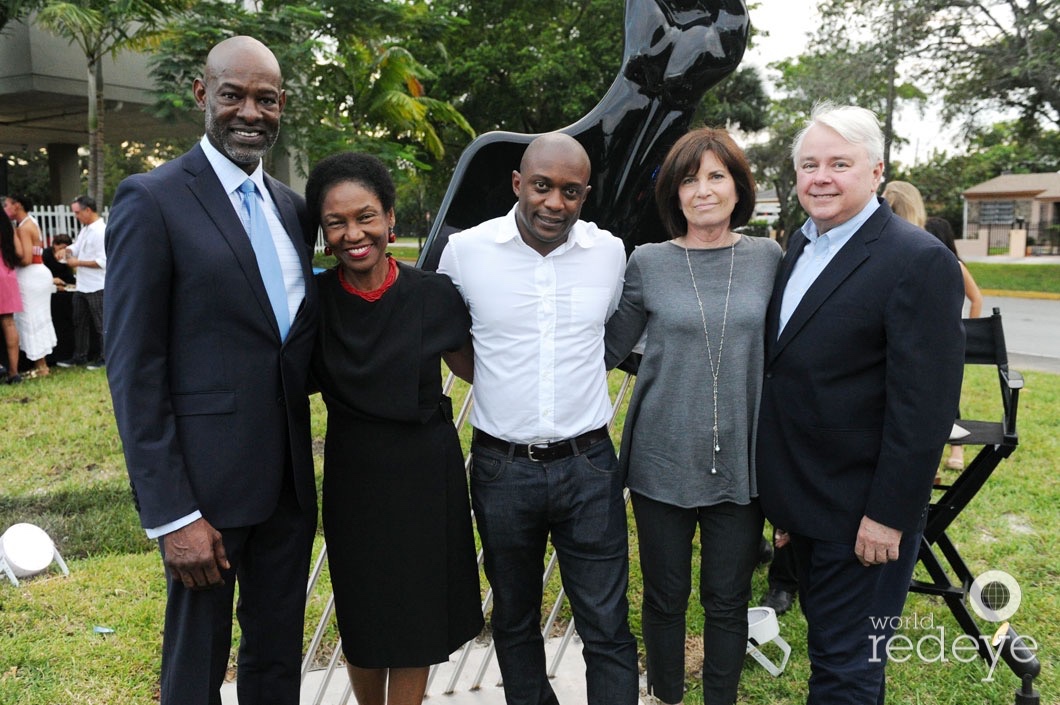
Willie Logan, Marilyn Holyfield, Hank Willis Thomas, Debra & Dennis Scholl
WRE: What was the inspiration behind “All Power to All People”?
HWT: I was inspired by the iconography of the black power movement, and that hair was used a tool for protest.
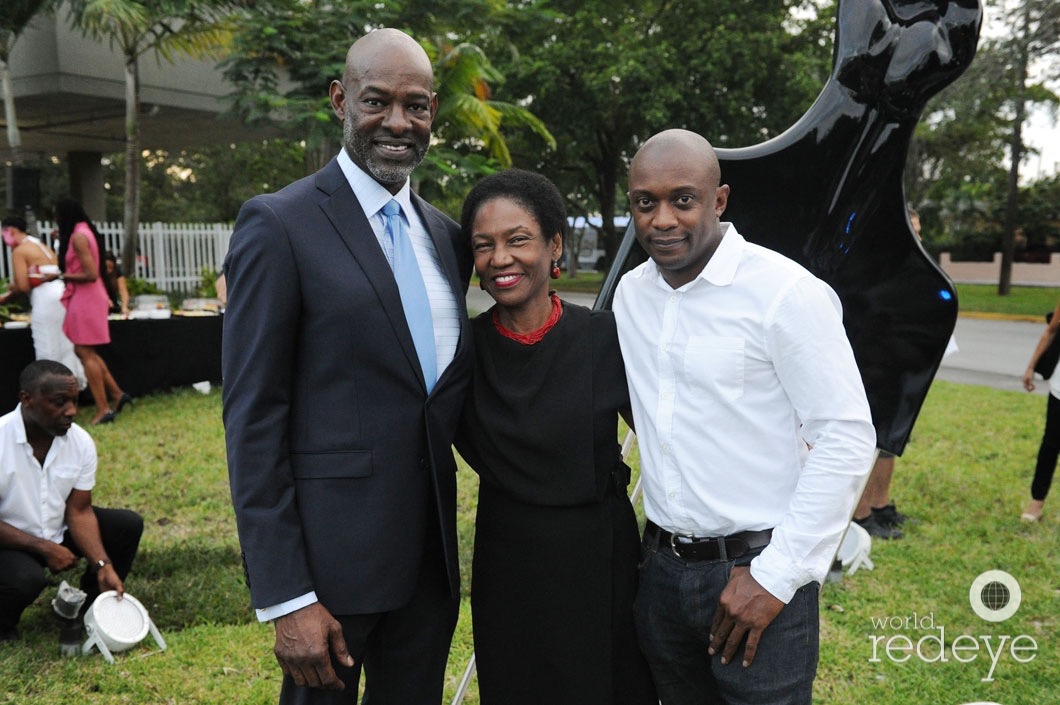
Willie Logan, Marilyn Holyfield, & Hank Willis Thomas
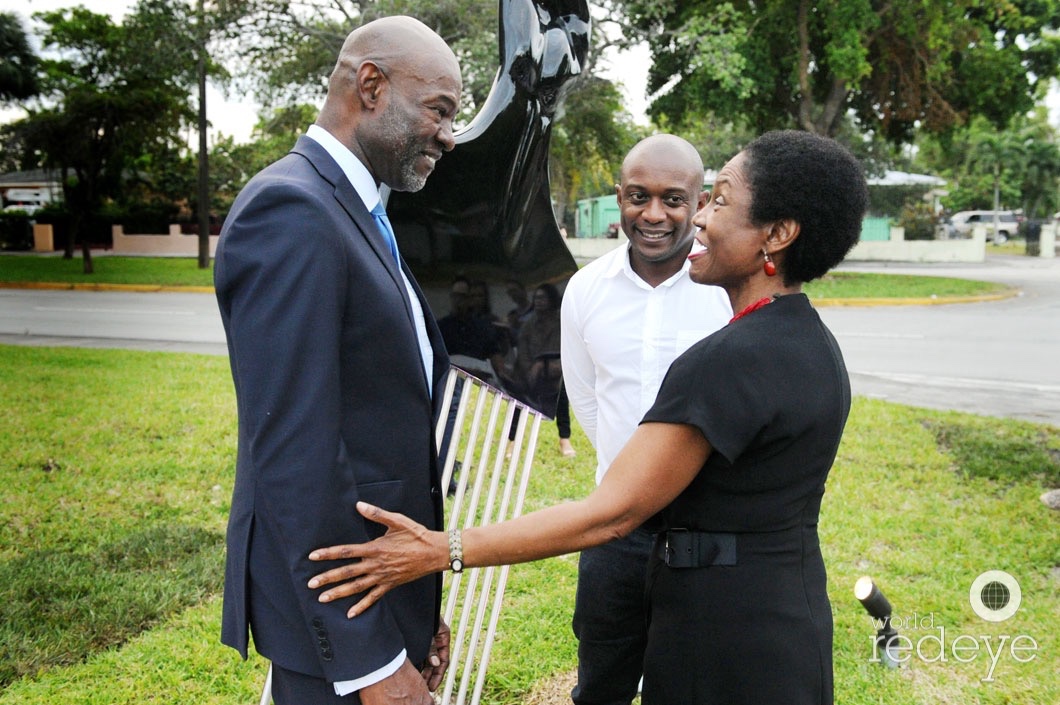
Willie Logan, Hank Willis Thomas, & Marilyn Holyfield
WRE: Is sculpting your favorite medium to work with? why? If not, what is?
HWT: My favorite medium is interacting with people and exchanging ideas. Art doesn’t have to be installed on walls or erected on podiums, it can be a way to interact with people.
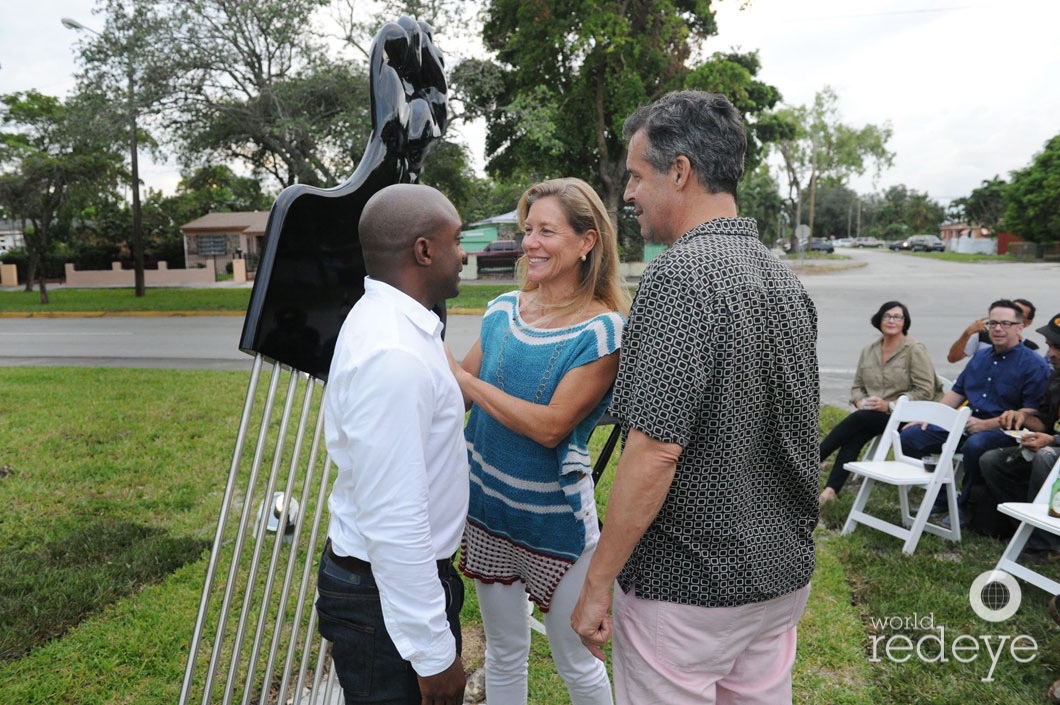
Hank Willis Thomas, Kathryn & Dan Mikesell
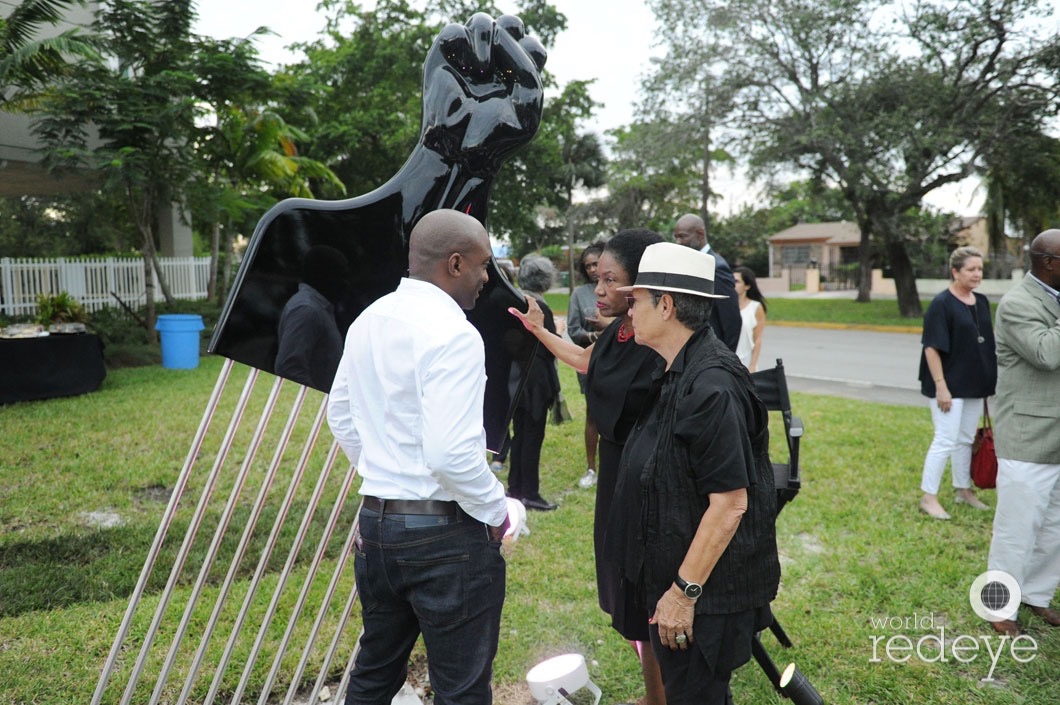
Hank Willis Thomas, Marilyn Holyfield& Mera Rubell
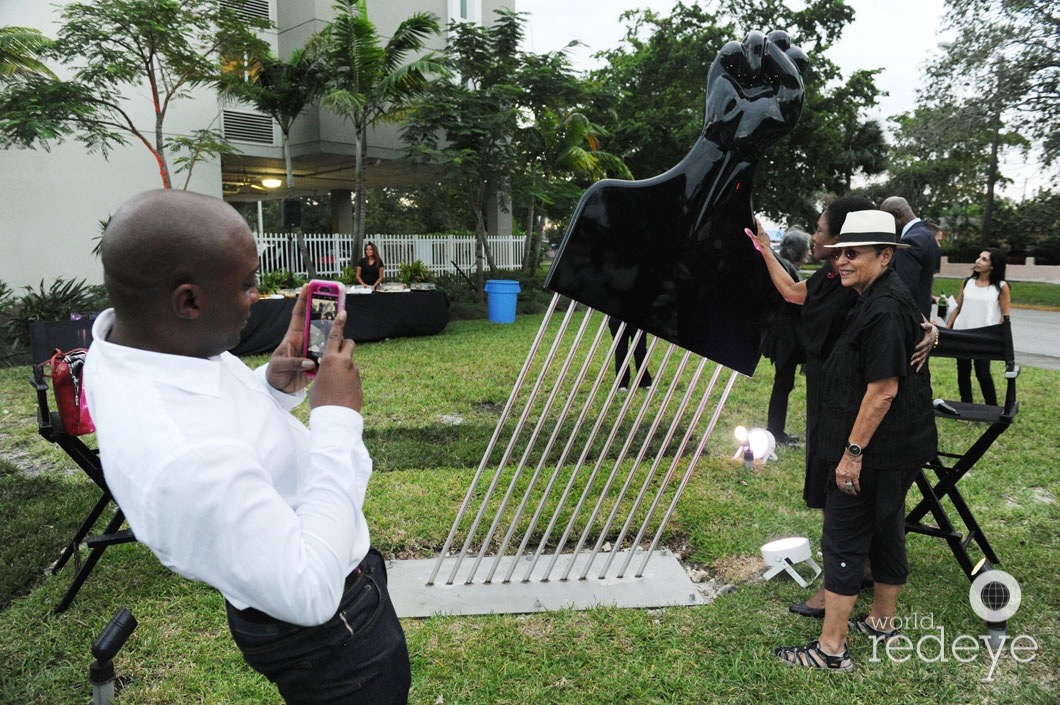
WRE: What message are you trying to communicate with your art?
HWT: I tend to learn more from audience responses than what I originally intended, so the message is constantly evolving. Ultimately, I just want people to reconsider history and the way it was told to us. I want them to think about making it anew.
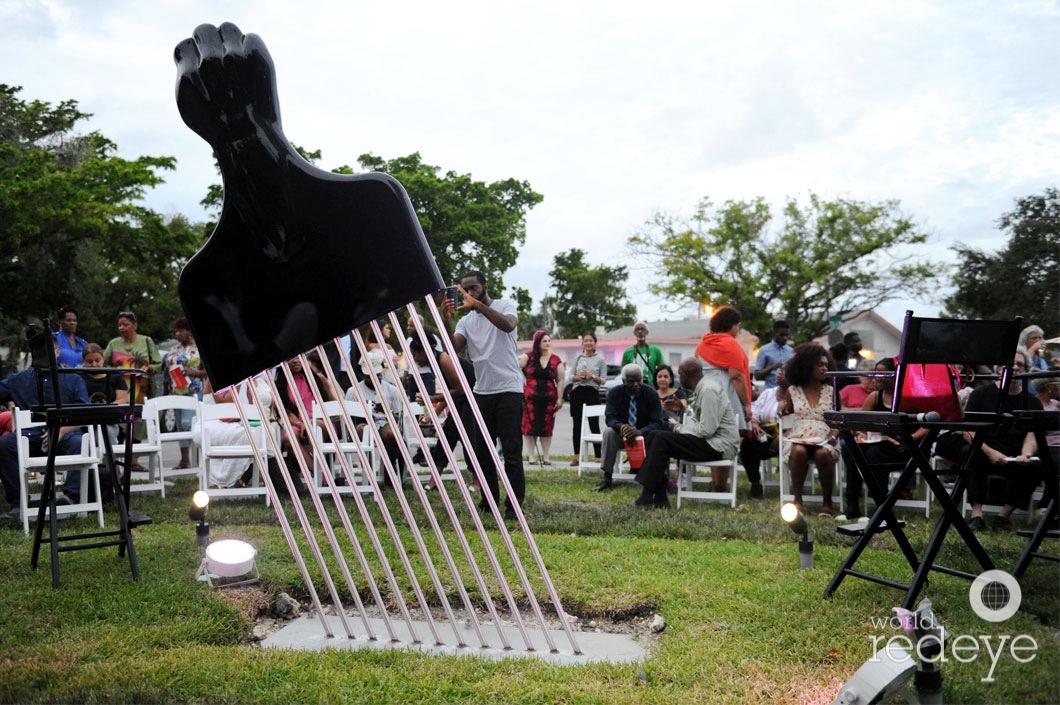
WRE: How has your heritage affected your work?
HWT: I don’t separate my work from any aspect to my life. My heritage is my work.
WRE: When are you at your most creative?
HWT: Every second of my life.
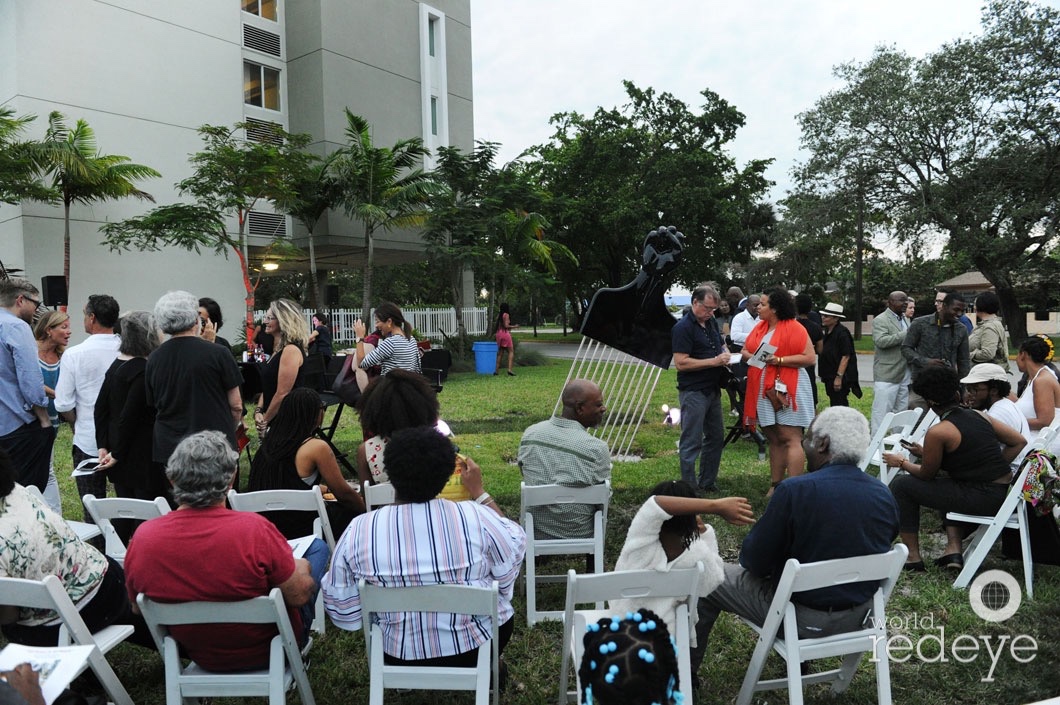
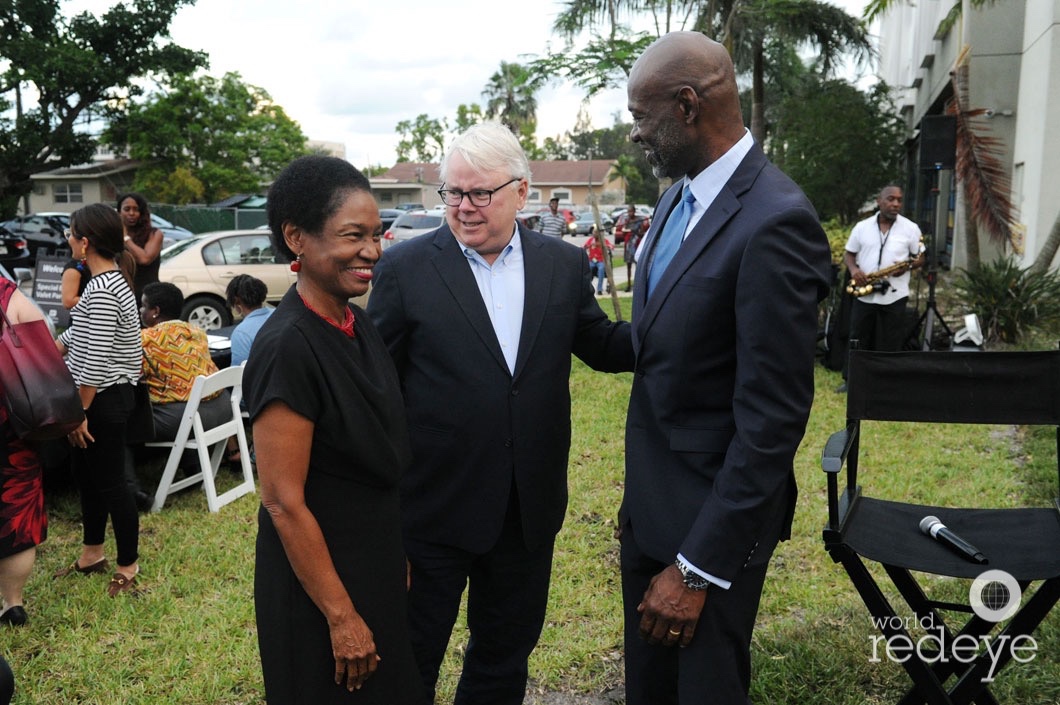
Marilyn Holyfield, Dennis Scholl, & Willie Logan
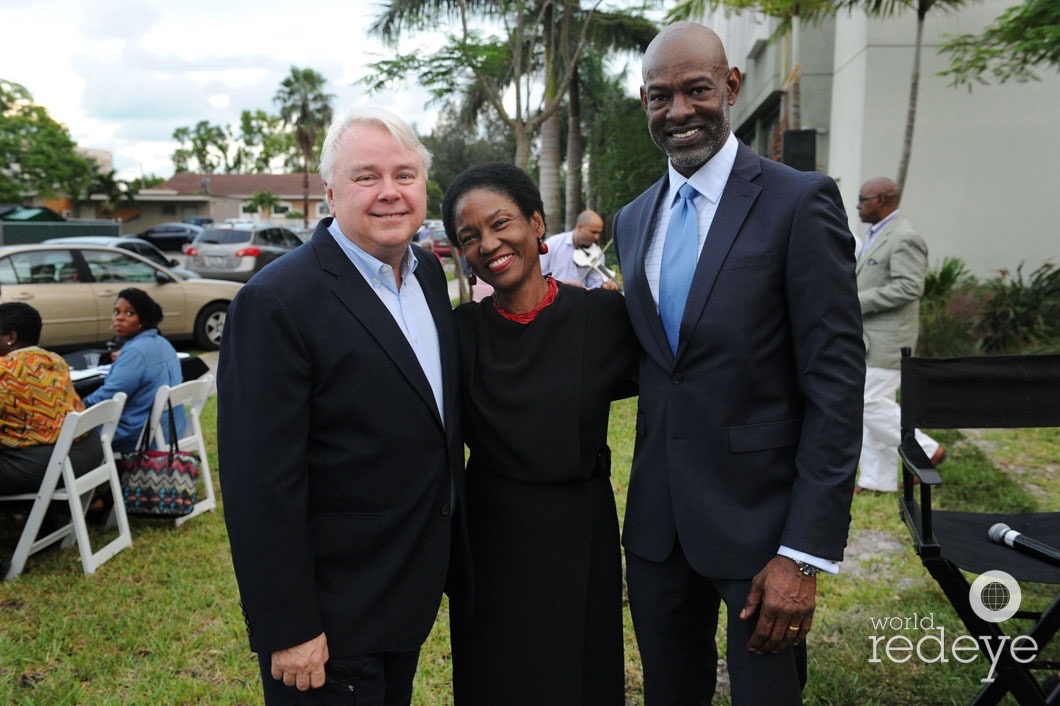
Dennis Scholl, Marilyn Holyfield, & Willie Logan
WRE: What are you hoping people will take away from your work?
HWT: I want them to think deeper and ask more questions about things they think they already know.
WRE: What is it about Miami that lured you to display your work here?
HWT: Many of the most significant moments in my career happened in Miami. So, it’s fitting.
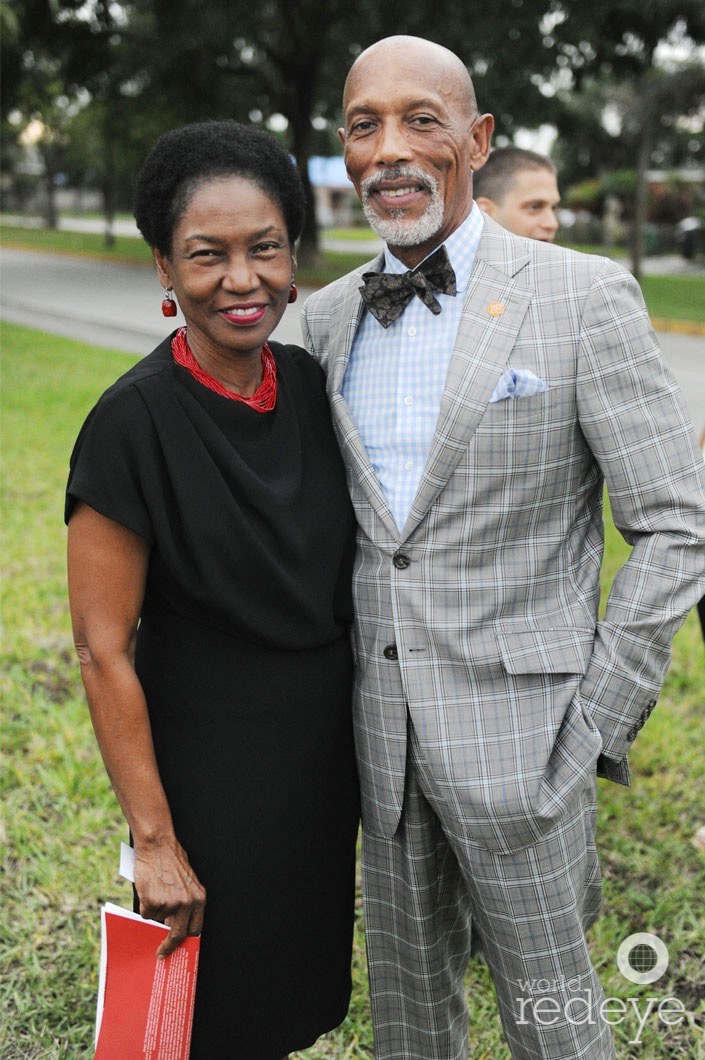
Marilyn Holyfield & Eric Knowles
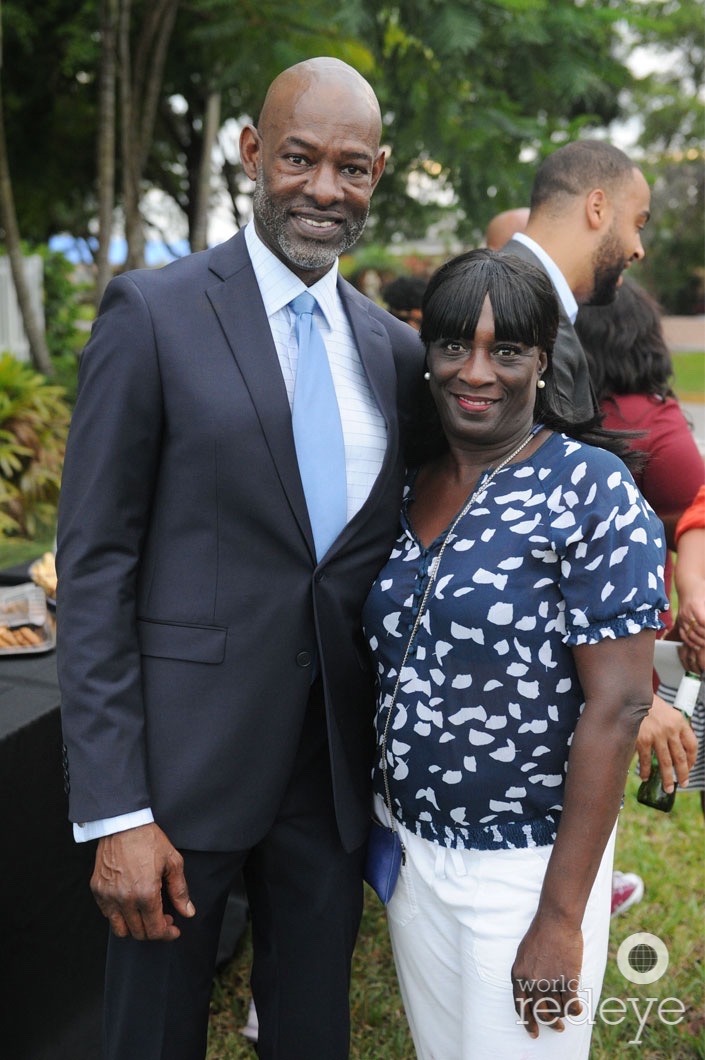
Willie Logan & Felicia Bell
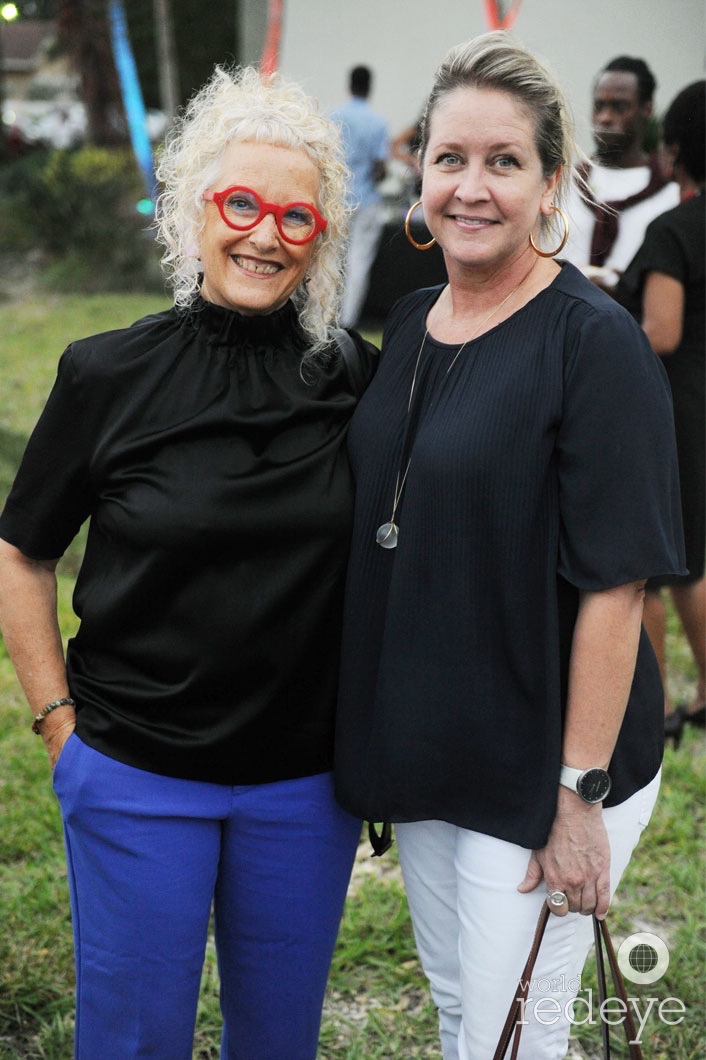
Tami Katz-Freiman & Lorie Mertes
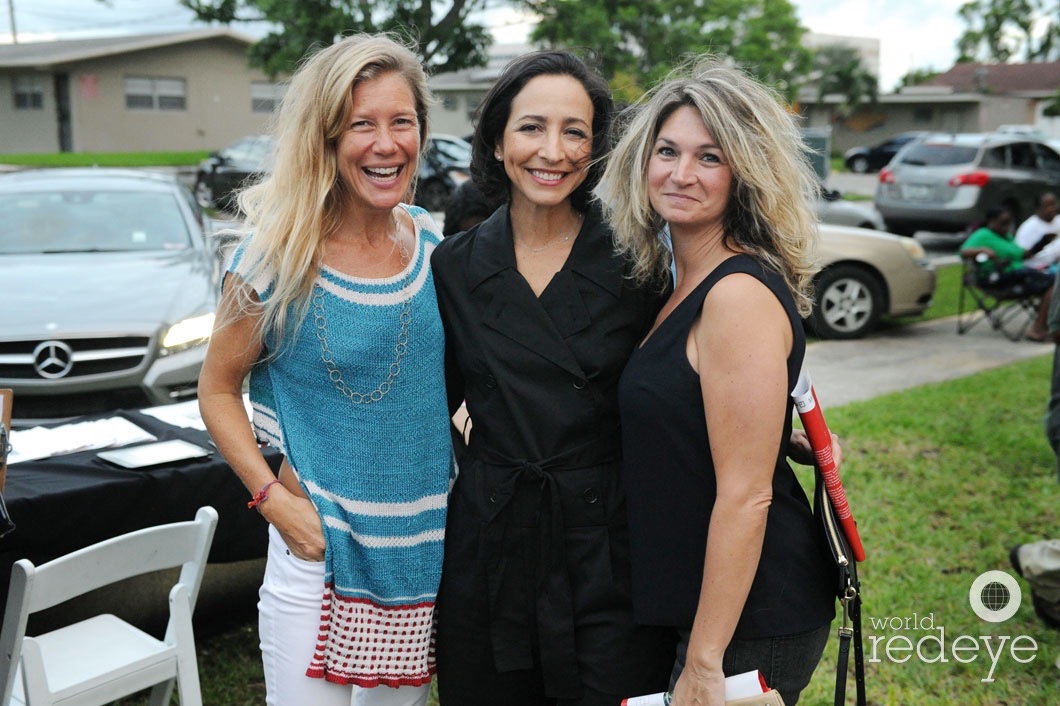
Kathryn Mikesell, Dina Mitrani, & Cristina Dominguez
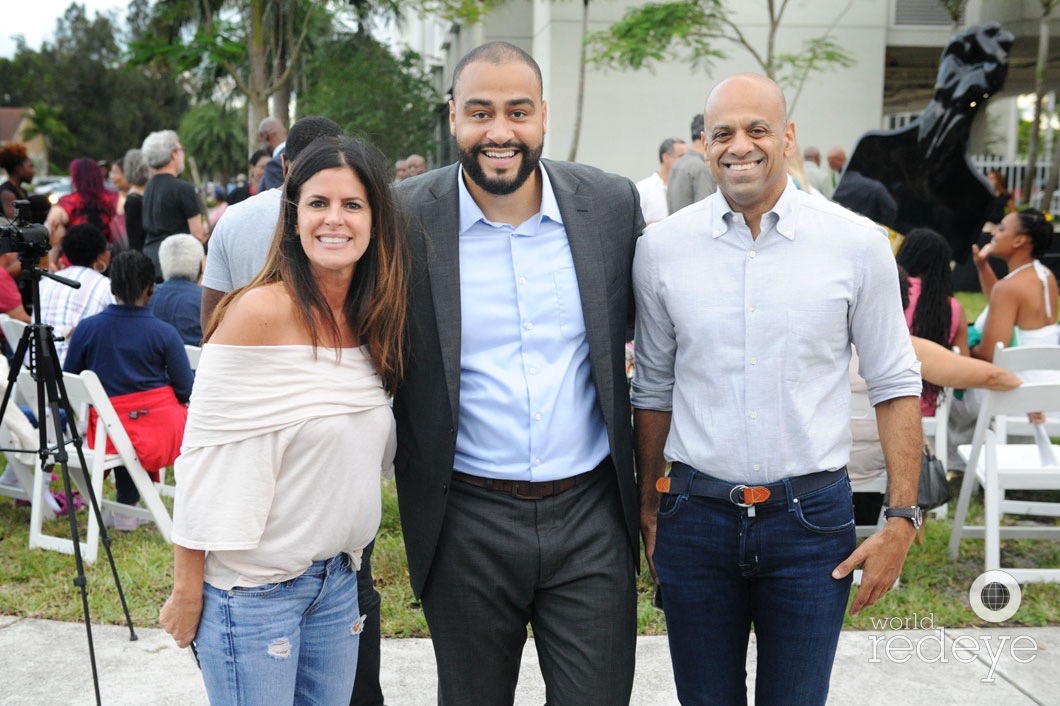
Veronica Zarco, Michaeljohn Green, & Farrukh Bezar
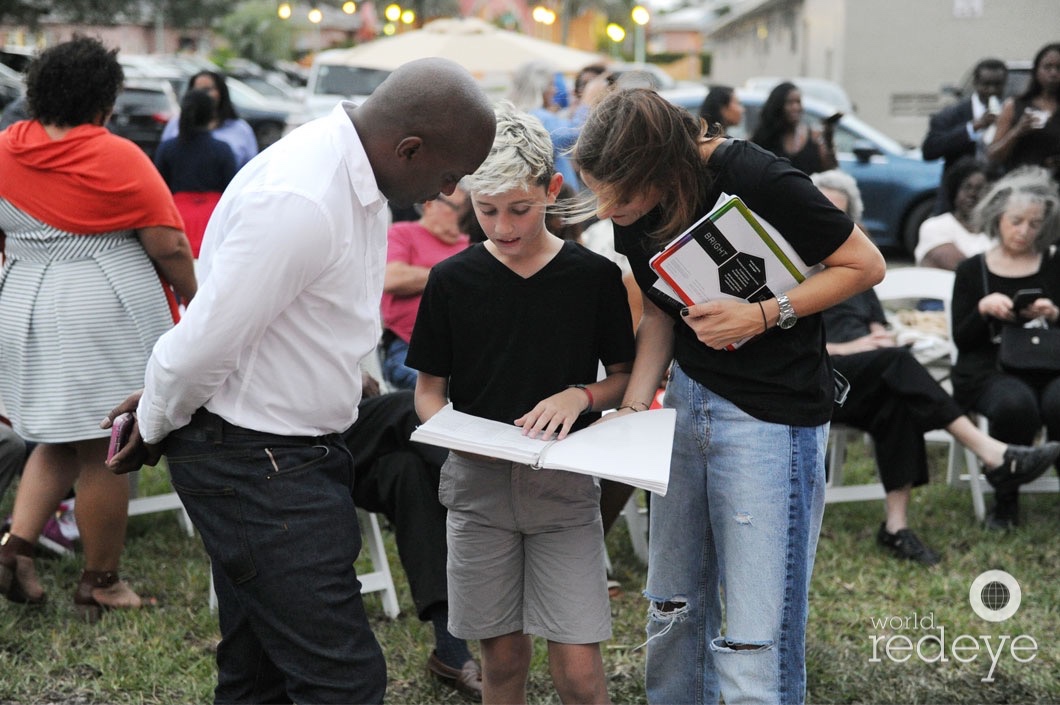
Hank Willis Thomas
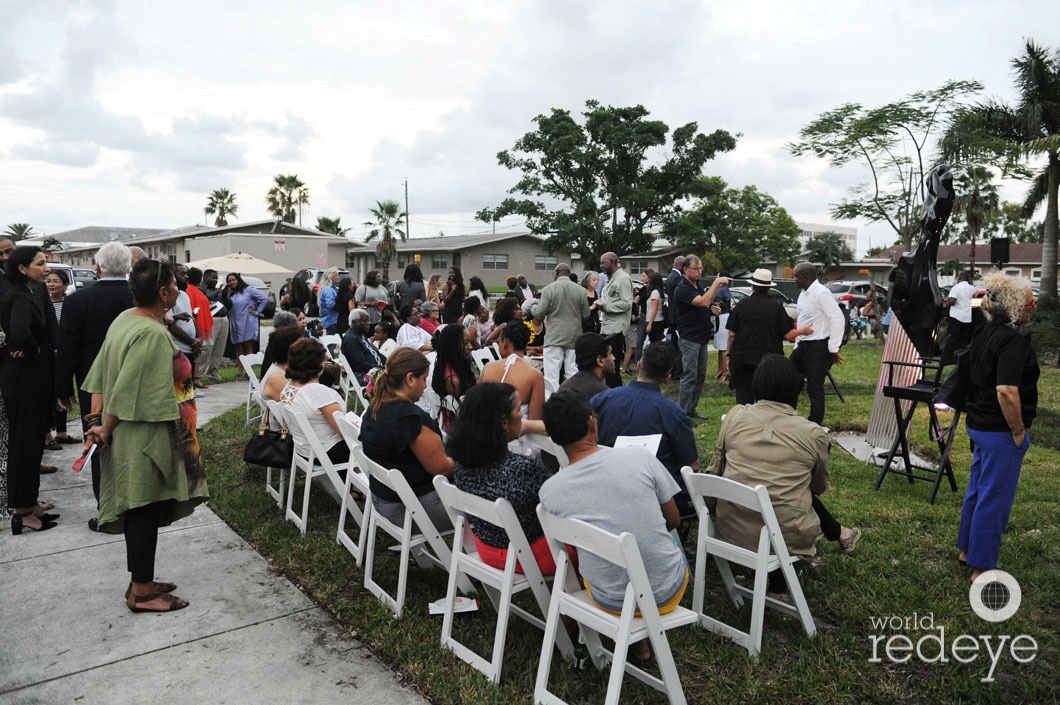
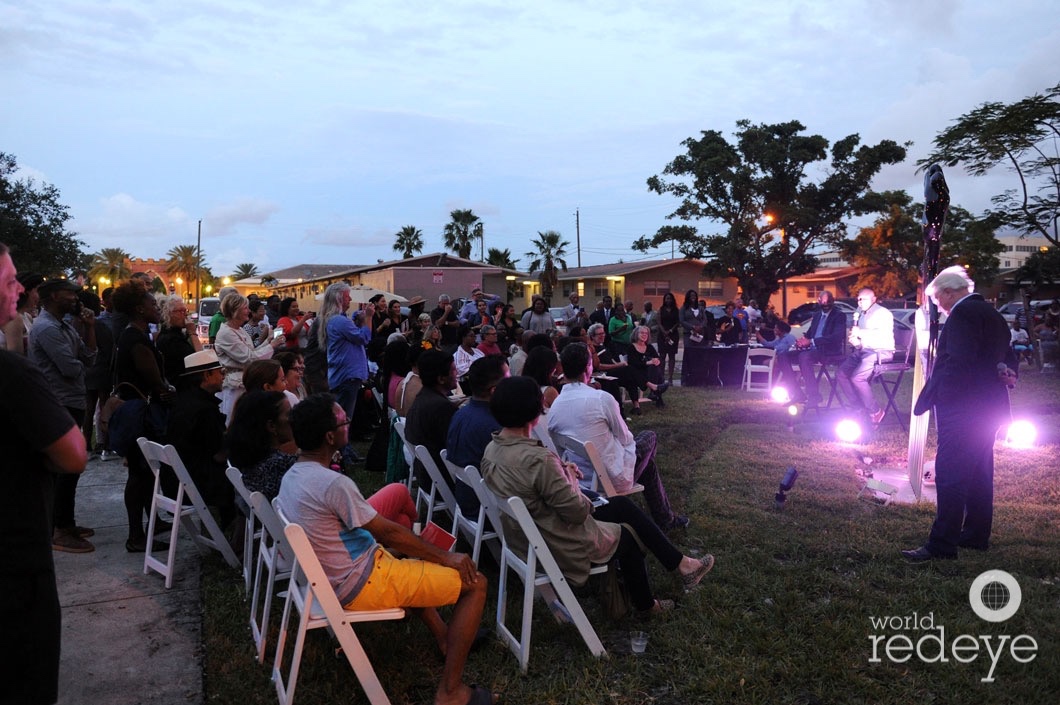
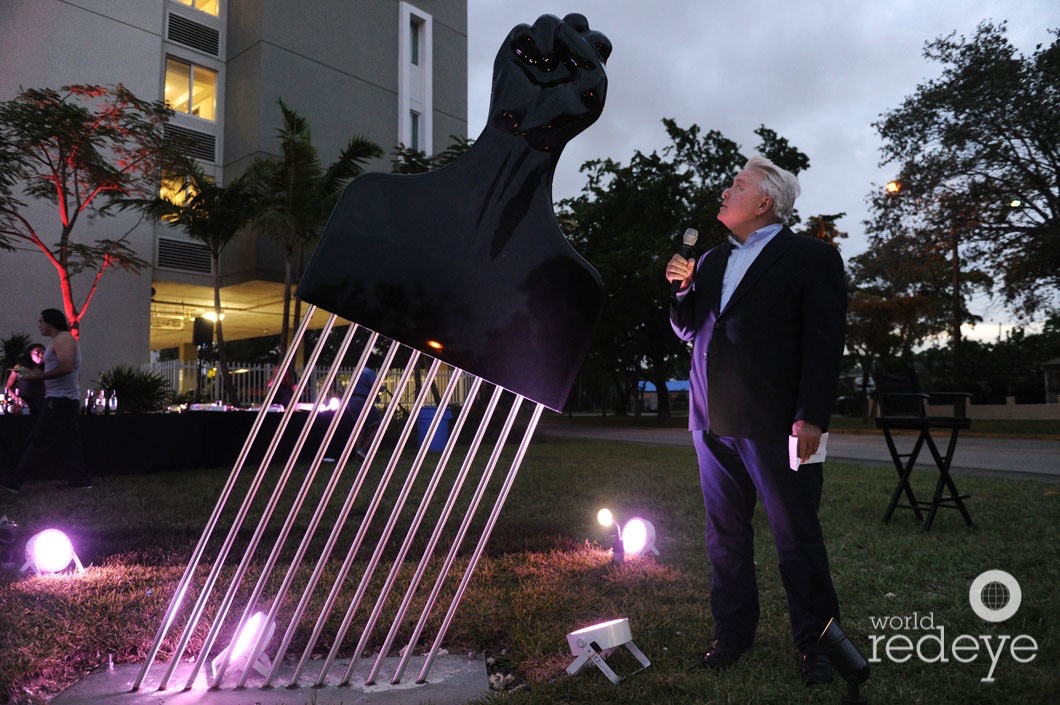
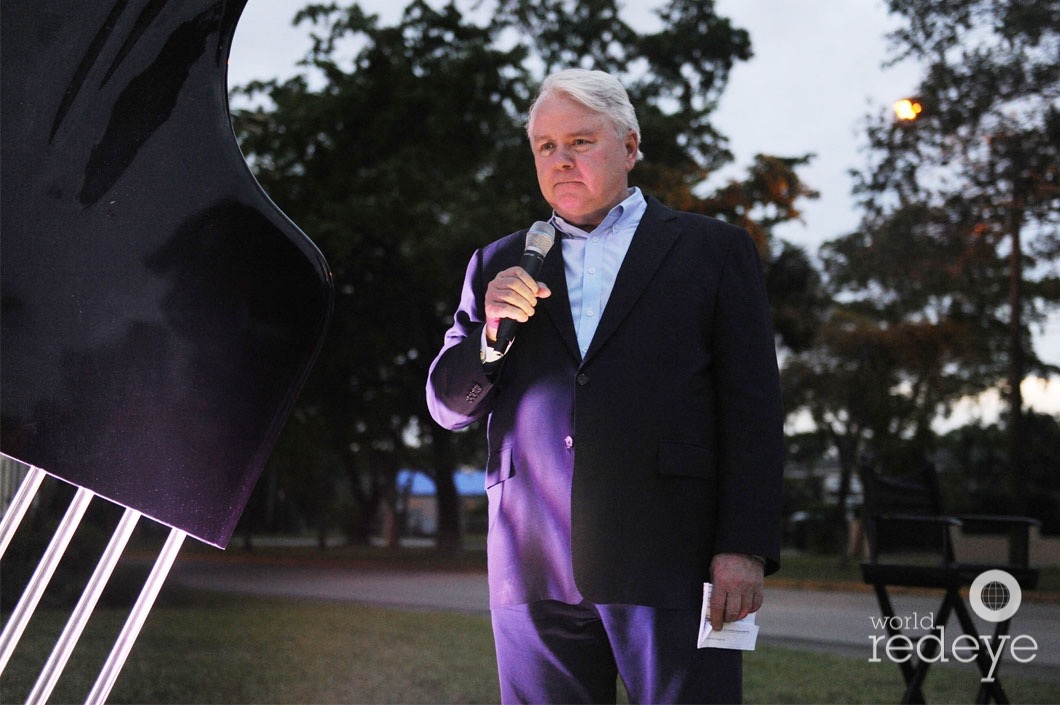
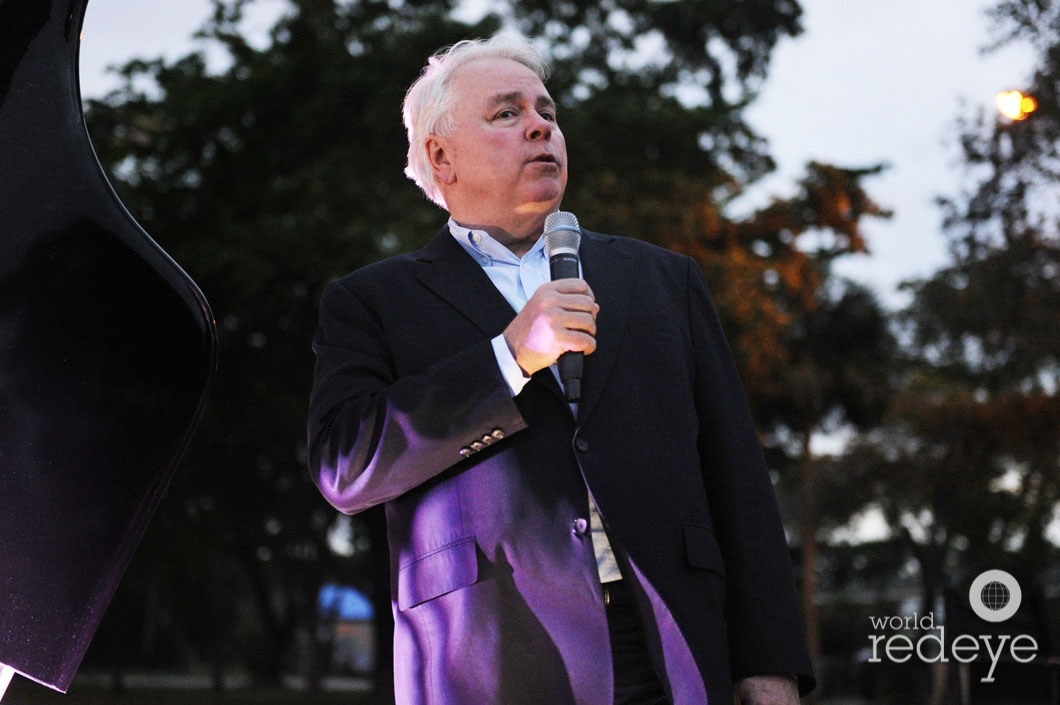
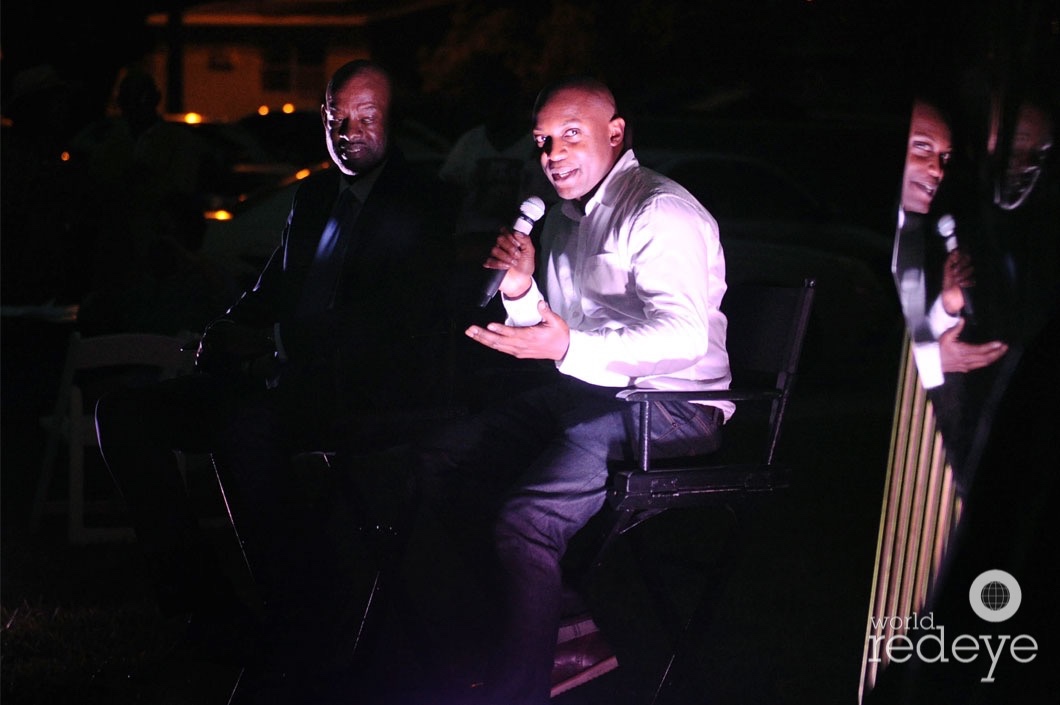
Hank Willis Thomas
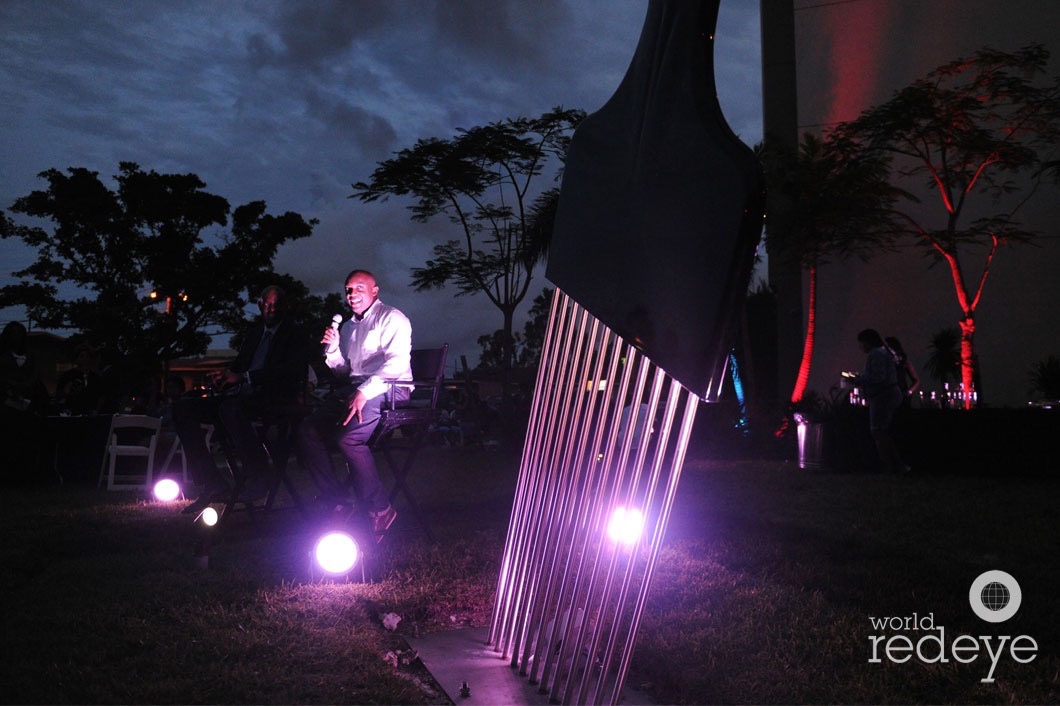
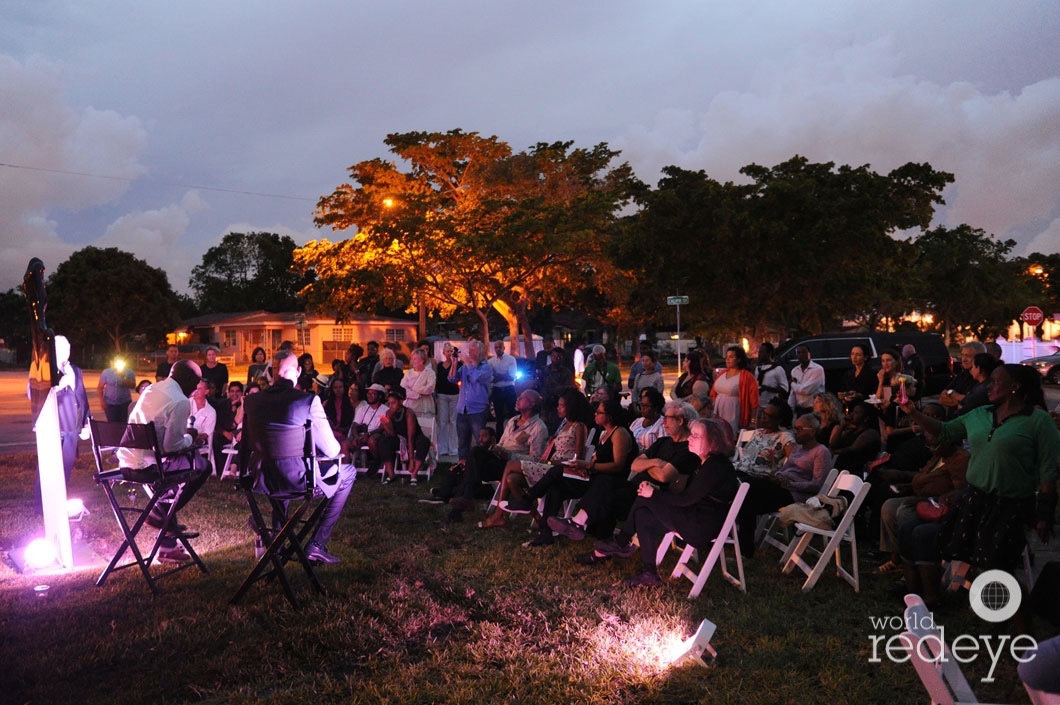
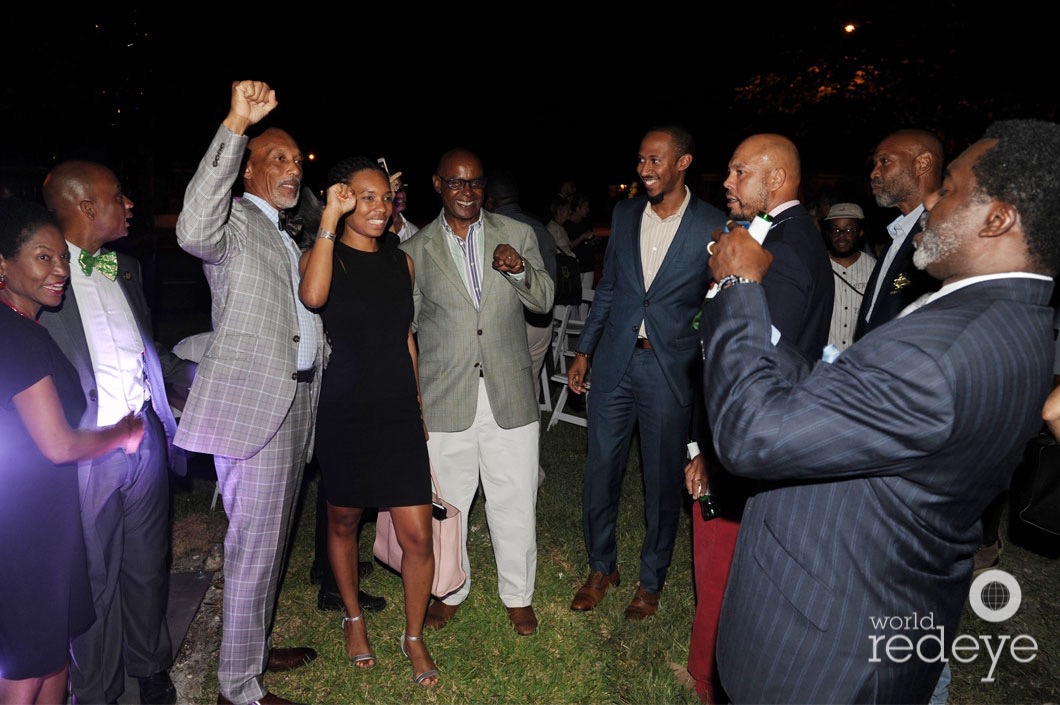
Eric Knowles & Ludlow Bailey
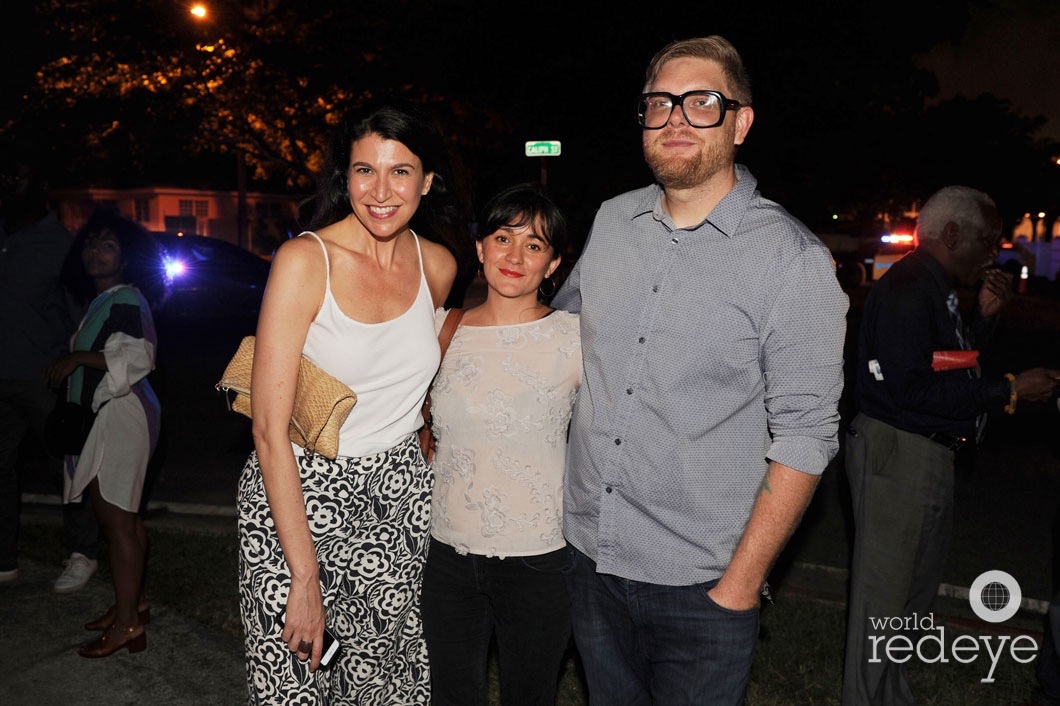
Carolyn Travis, Cristina Gonzalez, & Books Bischof
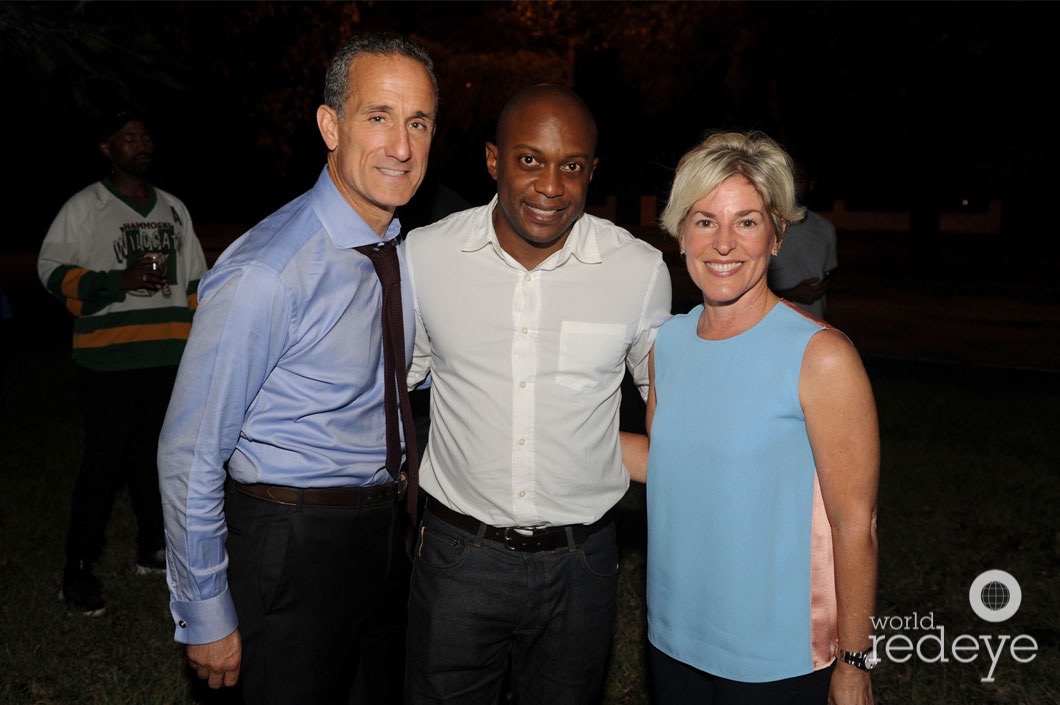
Evan Reed, Hank Willis Thomas, & Stephanie Reed
